Acting Secretary of the US Navy Thomas B. Modly has announced that he is commissioning a Task Force to conduct a six-month study to reimagine the future of the aircraft carrier and carrier-based naval aviation.
“The long-term challenges facing our nation and the world demand clear-eyed assessments and hard choices,” said Modly.
“Because we have four new Ford carriers under contract, we have some time to reimagine what comes next. Any assessment we do must consider cost, survivability, and the critical national requirement to sustain an industrial base that can produce the ships we need—ships that will contribute to a superior, integrated naval force for the 2030s and far beyond. Aircraft carrier construction sustains nearly 60,000 skilled jobs in over 46 states. It can’t be simply turned on and off like a faucet. We must be thoughtful in how we approach changes as they will have lasting impacts on our national industrial competitiveness and employment.”
“Our future strength will be determined as much by the gray matter we apply to our challenges as the gray hulls we build,” added Modly. “We need the best minds from both inside and outside of government focused on this issue.”
According to a US Navy release:
“The goal at the end of the study is to provide a report to the secretary of the Navy detailing a vision of the competitive global security environment and the role of carrier-based naval aviation in that future context. Considerations will include expected principles of deterrence, global presence missions, protection of American economic security, as well as potential combat with possible adversaries.
The study will also define likely constraints of means in terms of future defense budgets, as well as avenue to contemplate future possible technologies not yet invented that could change the stakes of carrier-based naval aviation in all phases of global competition.
Finally, the report will provide options for the Department of the Navy in requirements for different various future aircraft (manned and unmanned, nuclear and/or conventional) carriers, to be used in future months and years in developing guidance to industry. The study will also examine how best to utilize and evolve the existing carrier fleet, including the more flexible and adaptable Ford Class, to meet the challenges of advanced long-range weapons that will extend and expand contested areas in the future.”


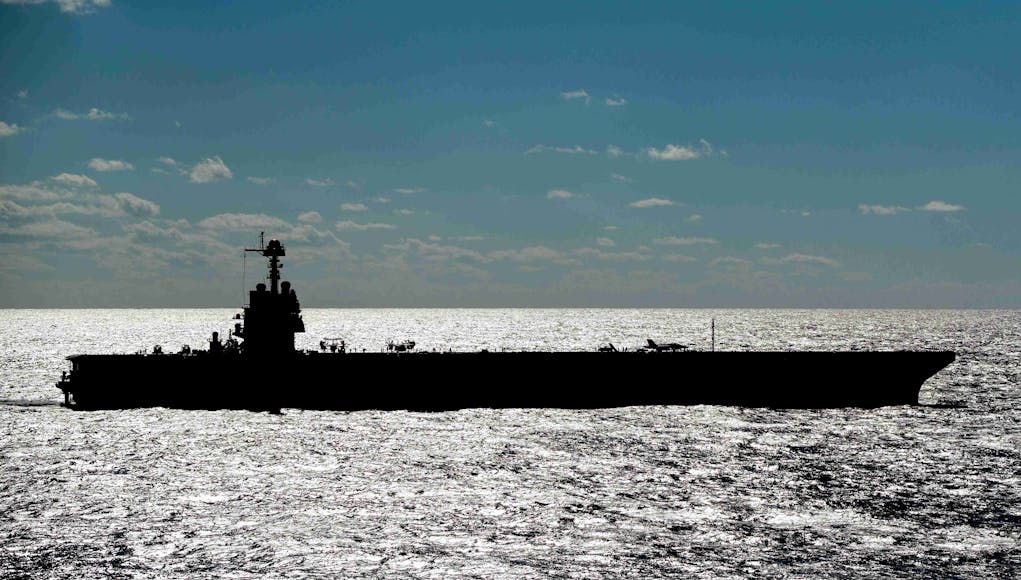


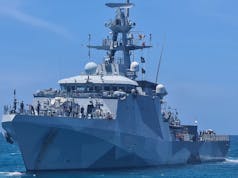
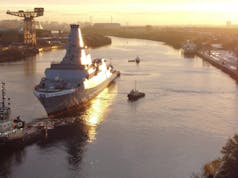
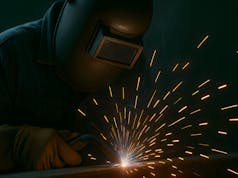
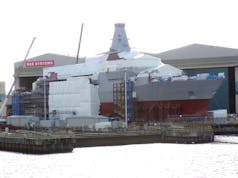





President has cancelled the whole programme presumably he is not a fan of the new naming convention.
I think the USN will now limit their nuclear carriers down to 6 or 7 and use the funds saved to operate up to 8 QE style F35 carriers. Gives them much more flexibility and is cheaper, less expensive ships with and lower manning. Of course their F35 carriers would be carrying 40+ aircraft each so they would still be very powerful ships. Basically the nuclear powered carriers would be for the Pacific & Indian Oceans and the ‘Harrier Carriers’ in the Atlantic, Med, Caribbean & Gulf.
It certainly would be very interesting if that were to happen, but the US has been here before with projects like the CVV aircraft carrier planned in the 1970s, and each time they have opted to build more supercarriers instead.
Agreed, in the end building Super Carriers maintains lots of jobs in critical Congressional Districts.
Crazy that 46 states are involved in the construction process. It can’t be very efficient but all about getting the support of politicians. If the US does elect a president that pushes towards universal health care the defense budget is the first place they will go and tell the rest of the world to look after themselves.
Also crazy that despite the health insurance system across there, government spending on health care is roughly twice as much per capita as the various ‘socialist’ European systems. So universal healthcare might allow a defence spending increase ahaha
That’s not even including the payments by private individuals, US healthcare is over 4 times the cost of the NHS ( which admittedly is always in the top two of the most efficient western systems).
Apart from the 10 gator navy carriers they already have
I think something like 4 Fords, and 16 Trumps (ie modified QECs).
As Mark B said, the president would like this idea very much, those carriers are tremendous!
Have you written to them about it so they can save their time bothering about their own plans.
My point being that you cannot snap fingers and invent a plan at the drop of a hat.
It strikes me the published comments are all about asking how long is a piece if string.
will
I think this study is just there to reiterate the importance of carriers, so that the Navy can get the funding they want.
Carriers have never been invicible, the submarine threat has always been there, so have antiship missiles. Furthermore hypersonics are still very stages, especially when it comes to targeting a moving ship at long distances. No doubt there will be progress in their effectiveness, but it is just one more tool to destroy carriers, just like tactical nukes etc… nothing fundamentally has changed.
In fact carriers are very important to the US to enforce their foreign policy. Did i miss something what is the magical replacement? Carriers are heavily defended mobile airbases, so much less vulnerable to attacks than a land base in the middle east. Not to mention, the US needs to get authorization to launch strike missions from the host nation. We have seen many times in the past that this was refused, ie Incirlik in Turket as well as other ME bases during Iraq 2003. The carrier is always a reliable option to carry such strike missions.
While many predict the end of the carrier, i see a bright future. In fact there will be more carriers now than before:
– China has built 2, building a 3rd in CATOBAR config and plans to have 6 in total in this coming decade.
– India has 2 carriers, and is planning to build a 3rd in CATOBAR config
– S Korea is in the design phase to build 2 carriers, likely CATOBAR
– Japan is looking to use their 2 Hyuga class ships as carriers for the F35B
– Russia is in the design phase of replacing their carrier, we wil see if their budget will allow it, but the intent is there
– Italy has just launched it’s 2nd carrier Trieste
– Tukey has the Anadolu, but missing planes since they were kicked from F35
– France has already submitted their design proposal for their next carrier, government decision is due this year.
And of course the UK has 2 carriers entering service
So basically all the big military powers are investing in carriers, why would the US reduce their numbers now? The US Navy is just furious that they had their budget reduced and have to fund the Ohio class SSBN as well. This study will be a way to just ring the alarm bells for congress.
PS sorry but the Marines may like to think their WASP class can make up the slack, this is not true since they are not a platform to offer much range for deep strike, at best they can be there for fleet defence, or then need to get in very close to shore which is a very vulnerable position and still reduced range. F35B does not do buddy refuel like F18 Hornets can, nor does it have the range of the F18.
Even for the US economy the Ford class, or their next iteration potentially unsustainable. Despite Trumps propaganda the economy has grown much faster in the past and is not as strong as he claims (rather line his own hyped businesses) and US infrastructure is massively under pressure and in need of investment in many parts. So at some stage I think Robs solution may well be the future, its timing is however what is up for debate and I suspect that will be long after common sense and financial probity have dictated the logical timing for it.
I believe China has paused construction on their 3rd carrier.
Yes they are all sick,and when does china start to pay for infecting the world.
Hi John, they already started, see Iraq, Iran, Vanuatu, and others.
This will involve the production and export of 150m masks a day as well as dozens, maybe hundreds of medical teams risking their own lives to save people like you.
It will provide them an excellent opportunity to test their new strategic airlift capabilities, as well as earn them the respect, admiration and gratitude of most counties around the world.
If you are going to get sick John, the best place to do so would be China.
tryed no flights.
tried sorry.
Best place to be sick is China if your a communist party member, Andy… unfortunately for the majority of the population, healthcare isn’t so good….
Hah hah hah
Don’t go to a filthy public multi animal market/ butchery/ abattoir then. Otherwise goid lyck to you.
I suppose we should consider paying compensation to the world for the 1918 flu pandemic as most studies feel it came from either a British or US army base. Disease knows no boarders or race and novel diseases or mutations can pop up in any population. China have actually done more than most western nations would be capable of in keeping it under control…
The study isn’t about whether the US should have carriers or not, but to “… reimagine the future of the aircraft carrier and carrier-based naval aviation”, i.e. whether they have the right carriers for the future. The future being the next 50-60 years, not just the next 10-20 years. This isn’t just the USN, its coming from US secretary of defense as well, so it doesn’t look like just a USN budget ploy.
The submarine threat is certainly there but it is the increasing threat from the air that is driving this. The US has enjoyed a half century plus of carriers being pretty much invulnerable to air attack, so IMO they are experiencing something of a culture shock to their strategy. Ever more sophisticated stealth and super/hypersonic missiles are contributing to this, but the US would probably still expect to intercept most if not all of these, with a layered group defence of kinetic, EW, decoys, and in due course laser counter measures. The real challenge that’s developing is improving ballistic missiles in combination with enhanced satellite capabilities, such as semi-permanent tracking and surveillance from thousands of LEO satellites. No layered defence against BMs, its either SM-6 or SM-3 currently and that’s it. When there are thousands of easily launch-able satellites, taking out the eyes isn’t so easy either.
As ever its a competition between measure and counter-measure, but hoping a carrier never takes a direct hit from a ballistic missile is not a strategy. The question then is whether a carrier will survive such a strike and if so what is the probability of being able to continue the mission. In either case, the argument may be for a greater number of smaller carriers. Its then a case of what those carriers would look like in terms of capabilities.
The Ford class are impressive ships but 3-4 times more capable then a QE class carrier? I dont think so. When you then add yearly running costs, the Ford class, even for the USA are prohibitively expensive.
Would love the USA to switch to the most efficient carrier design ever conceived. The QE class carrier.
If they did I imagine it would be a STOBAR version of the QE, to allow their F35Cs to operate from it.
I doubt the USN will be dropping CATOBAR any time soon, all their current aircraft and their various carrier-based drone projects rely on it. I’m expecting, if there’s any changes at all, something like a slightly larger QE – longer, heavier, more weapons, and an electromagnetic CATOBAR system.
I suspect CATOBAR or not will depend on the threat assessment.
If a ballistic missile hit is considered survivable, then the question becomes whether the carrier can continue to operate at some level after it. A VTOL carrier is less dependent on ship systems to take off and land aircraft, i.e. no cats and no traps, whereas damage to the flight deck may prevent any aircraft recovery for a CATOBAR carrier.
If however a BM hit is considered likely to be a carrier killer then the argument might be to maximise the carriers capability with CATOBAR, rather than compromise performance for no benefit.
So pretty close to a Ford class than…
A Ford class is considerably more capable in its field than a QE with new innovations designed to refuel and re-arm it’s much larger airgroup in high speed turnarounds, generating maximum sorties which are not built into the QEs. Add of course the F35C, EA18G, E2D and inflight refuelling etc and they have capabilities we simply don’t…. .
The US Navy has far more experience than the RN in the design, building and operation of carriers. Also the US Navy operates in the big ocean, the Pacific. It would have no reason to use the QEC design as it no doubt could design a far more capable ship itself.
Yep if a hit from a hypersonic projectile or ballistic missile is a definite mission kill for any ship then two smaller carriers means you still retain 50% of you capability.
Very well put, I cannot agree more. As for the USN going down the QE route, dream on. The QE class are fine for the RN as oversized Harrier Carriers, they lack nuclear propulsion simply because we have never designed or built a Nuclear reactor large enough to power a surface vessel of size and actually have no where to build it if we did. Further automation may be included in future US carriers and they could take a leaf out of QEs book there, but of course in reality if a QE were to take a hit in combat, it could knock out or heavily reduce the power actually available for it
Well the Americans were running a trillion dollar a year deficit before the Corona virus, so a pure Ford Carrier USN is probably unaffordable. The CTOL version of QE (offered to the French) would suit the USN nicely. Had Emals & AAG been mature, (which they now are), Cameron would probably have gone with them & F-35C, rather than switching back.
The USN will only keep carrier numbers up, if they have a mix of Ford Supercarriers + CTOL QE.
Corona virus may finally push the Americans to sort out genuine affordable healthcare, so there is unlikely to be unlimited funds for Supercarriers. Although they do have a powerful lobby that has vetoed smaller carriers in the 70s/80s.
> corona virus may finally push the Americans to sort out genuine affordable healthcare
Fat chance, they’re too invested in calling anything that the government does that could help people communism, and the insurance companies have too much to lose and deep enough pockets to stop it.
IIRC the US has a law that requires the military to maintain at least 11 supercarriers. My money is on no change (too many politicians making sure their districts don’t lose jobs and the defence industry wanting to keep the money flowing) but if there is any, I’d guess that at most they ditch nuclear propulsion and make a gas turbine powered Ford mk2, or maybe go for a modified, enlarged QE.
Absolutely James, no change.
The US electorate would have kittens at the idea of a tax based public health system, (even though many effectively pay more per head for healthcare, via their insurance, if they aren’t lucky enough to have a job that covers it).
They have a strange disconnect with health care and taxes and don’t seem to be able to reconcile the two things together.
Re the Super Carriers, as has been said, they will carry on building them because to stop would be politically too damaging on many levels.
But the bizarre thing is, which I’ve never understood is that the US government actually pays more per head on healthcare than the UK government does for our whole health and social care system…..the US tax payers then stump up at least the same again in insurance payments……
Admittedly it’s unlikely, but there is no reason why America should not or cannot go for an insurance based national health system like France. Mandatory and non profit. France also has a private element as well. Not that we should turn up our noses, since we should follow their lead as well.
The entire USN fleet composition and structure seems to be adrift right now. I’ve been watching this occur for about a year. Whatever the causality, there appears to have been a major paradigm shift here… New weapons technologies? The reality of how vulnerable large surface combatants are to hypersonic missile technology? Fiscal realities? Probably a bit of everything IMO…
https://news.usni.org/2020/03/09/navy-kicks-off-study-of-next-generation-carriers-naval-aviation
Cheers
Another example of my thesis… I’m assuming that the new FFGX will be taking quite a bit of the slack here along with UMVs? The submarine force is also being looked at.
https://www.defensenews.com/naval/2020/03/07/destroyers-left-behind-us-navy-cancels-plans-to-extend-service-lives-of-its-workhorse-ddgs
Cheers
More: https://news.usni.org/2020/03/12/modly-parallel-fleet-studies-could-reshape-future-of-aircraft-carriers
The line for new Super Hornets is also shutting down to make way for rehabilitation of the current fleet.
https://news.usni.org/2020/03/10/navy-says-ending-super-hornet-line-frees-up-resources-for-life-extension-work